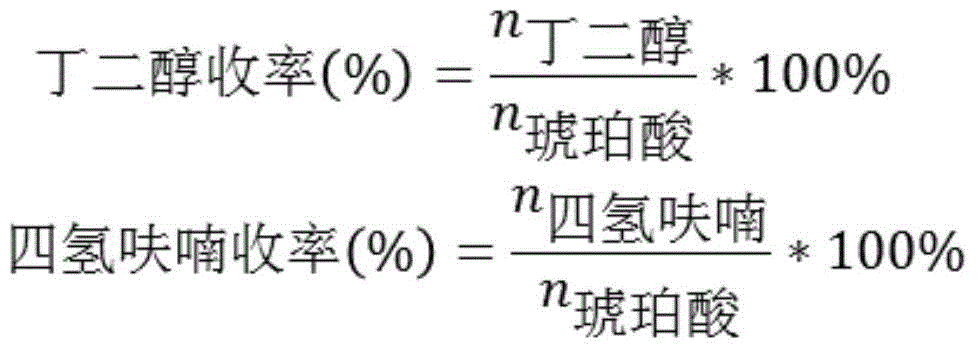A kind of catalyst suitable for succinic acid hydrogenation reaction and its preparation and hydrogenation reaction method
A hydrogenation reaction, succinic acid technology, applied in chemical instruments and methods, preparation of hydroxyl compounds, preparation of organic compounds, etc., can solve the problems of easy reduction of hydrogenation activity, poor stability of Pd catalyst, etc. The particle size is uniform and adjustable, and the preparation method is simple.
- Summary
- Abstract
- Description
- Claims
- Application Information
AI Technical Summary
Problems solved by technology
Method used
Image
Examples
Embodiment 1
[0040] Take 0.12g of ferrous chloride, dissolve it in 20mL of water, add 1g of activated carbon to it, adjust the pH to 8 with sodium bicarbonate, stir for 40min, filter, fully wash with water, then dry at 110°C overnight and then reduce it with hydrogen at 300°C for later use. Weigh 5.0g Tween 20 and dissolve it in 30mL water, stir well, take 0.0548g palladium chloride in the flask, add 1mL 15wt% sodium chloride solution to dissolve it, add NaHCO 3 Adjust the pH of the solution to 3.5. The palladium salt solution was mixed with the Tween aqueous solution, and 0.12 g of formaldehyde solution was added thereto, and the orange-yellow solution quickly turned black to obtain a palladium colloidal solution. The above iron-loaded activated carbon was added to the palladium colloidal solution, stirred for 1 h, filtered, and fully washed with water to obtain 5% Fe-3% Pd / C.
Embodiment 2
[0042] Take 0.12g of ferrous chloride and dissolve it in 4mL of water. After dissolving, add 1g of activated carbon weighed into the solution, let it stand for 24 hours, evaporate the liquid, and dry it at 80°C for later use. Weigh 5.0g of hydrogenated rosin glyceride and dissolve it in 30mL of water, stir well, take 0.0548g of palladium chloride in a flask, add 1mL of 15wt% sodium chloride solution to dissolve it, add NaHCO 3 Adjust the pH of the solution to 3. The palladium salt solution was mixed with the hydrogenated rosin glyceride aqueous solution, 0.12 g of ascorbic acid solution was added thereto and stirred at 70° C. for 1 hour, the orange-yellow solution quickly turned black, and a palladium colloidal solution was obtained. The above iron-loaded activated carbon was added to the palladium colloidal solution, stirred at room temperature for 1 h, filtered, and fully washed with water to obtain 5% Fe-3% Pd / C.
Embodiment 3
[0044] Take 0.26g of ferrous chloride, dissolve it in 20mL of water, add 1g of activated carbon to it, adjust the pH to 8 with sodium bicarbonate, stir for 40min, filter and fully wash with water for later use. Weigh 5.3g of Tween 20 and dissolve it in 30mL of water, stir well, take 0.058g of palladium chloride in the flask, add 1mL of 15wt% sodium chloride solution to dissolve it, add NaHCO 3 Adjust the pH of the solution to 4. The palladium salt solution was mixed with the Tween aqueous solution, and 0.13 g of formaldehyde solution was added thereto, and the orange-yellow solution quickly turned black to obtain a palladium colloidal solution. The above iron-loaded activated carbon was added into the palladium colloidal solution, stirred for 1 h, filtered, and fully washed with water to obtain 10% Fe-3% Pd / C.
PUM
 Login to View More
Login to View More Abstract
Description
Claims
Application Information
 Login to View More
Login to View More - R&D
- Intellectual Property
- Life Sciences
- Materials
- Tech Scout
- Unparalleled Data Quality
- Higher Quality Content
- 60% Fewer Hallucinations
Browse by: Latest US Patents, China's latest patents, Technical Efficacy Thesaurus, Application Domain, Technology Topic, Popular Technical Reports.
© 2025 PatSnap. All rights reserved.Legal|Privacy policy|Modern Slavery Act Transparency Statement|Sitemap|About US| Contact US: help@patsnap.com


